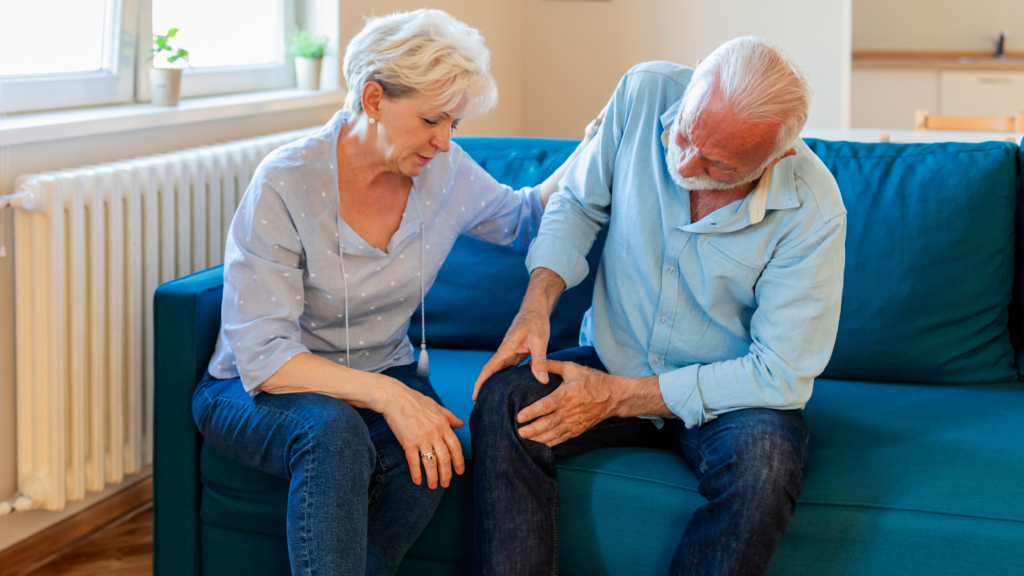Why Exercise is Vital for Arthritis
Living with arthritis can make the idea of exercise seem daunting. However, regular movement is one of the best ways to manage arthritis symptoms, maintain flexibility, and improve overall well-being. The key is finding low-impact activities that put minimal stress on your joints.
- Walking: As simple as it sounds, walking is an excellent full-body, low-impact exercise. Start slow and gradually increase duration.
- Water exercise: Swimming, water aerobics, or gentle water exercises offer buoyancy which takes the pressure off your joints.
- Yoga and Tai Chi: These mind-body practices combine gentle movement with deep breathing, improving flexibility, balance, and stress reduction.
- Cycling: Use a stationary bike or an outdoor bike on level terrain for a joint-friendly workout.
Exercise Tips and Modifications
- Warm up: Start with 5-10 minutes of light movement like walking in place or gentle arm circles to prepare your body.
- Listen to your body: Pain is a signal to stop. If an exercise hurts, modify it or choose a different one.
- Start slow and progress gradually: Begin with a few minutes of exercise several times a week. Slowly increase duration and frequency as you feel stronger.
1. Standing leg lifts

Standing leg lifts improve stability, balance, and strength.
Targets: Lateral (outside) glutes.
Purpose: Leg lifts can be an important way to improve stability, balance, and strength, reducing the impact on the knees.
Steps:
- Stand against a wall.
- Raise a leg to the side without rotating the toes to the side; keep the toes pointing forward or slightly in.
- Avoid leaning to the stationary side.
- Lower the leg.
- Repeat 15–20 times on each side.
2. Sit and stand

Targets: Quadriceps (front of thigh) and glutes.
Purpose: This repetitive motion is central to improving the range of knee movement and overall leg strength. Over time, it will become easier to stand up without pain.
Steps:
- Sit straight in a chair with the feet flat on the floor.
- Cross the arms over the chest.
- Stand up straight, slowly.
- Slowly sit back down.
- Repeat this for 1 minute.
3. Kick-backs

Kick-backs, performed standing, improve the leg muscles and reduce stiffness.
Targets: Hamstrings (back of the thigh).
Purpose: This exercise is great for strengthening the leg muscles and reducing knee stiffness.
Steps:
- Stand up straight.
- Lift one foot and bend the knee, bringing the heel toward the buttocks.
- Hold for a few seconds, then lower the leg.
- The knees should be aligned and the posture straight.
- Repeat 10–25 times per session.
4. The clam

The clam, which is performed lying down, strengthens the buttocks.
Targets: Glutes.
Purpose: Knee strain is often at least partially due to weak glutes, resulting in the knee joints absorbing too much shock. Strengthening the buttocks leads to less impact on the knees.
Steps:
- Lie to one side.
- Bend the hips and knees to 90 degrees, with the shoulders, hips, and feet aligned.
- Keep the feet together.
- Lift the top knee up as far as possible, then slowly lower it.
- Hold the stretch for 3–5 seconds, and repeat on the other side.
- Aim to do this 10–25 times, twice daily.
5. Quadriceps stretch

This exercise is performed lying down. But if lying exercises are too difficult or painful, a person can work their glutes by doing seated buttock clenches or backward leg lifts.
The quadriceps stretch helps with flexibility and range of motion.
Targets: Quadriceps.
Purpose: To improve the flexibility of the quadriceps and the range of motion of the knee.
Steps:
- Lie facing downward.
- Place the right forearm in front for support.
- Bend the left knee and grab the ankle or shin with the left hand.
- Gently lift the knee until there is a slight, noticeable stretch.
- Hold for a few seconds.
- Switch sides, and repeat a few times on each side.
Before starting
Always consult your physio before beginning any exercise routine. In addition to following the doctor’s recommendations, a person should:
- Start slowly: People with arthritis should be highly attentive to their body’s signals and stop if they experience any pain.
- Incorporate movement into daily life: Keep the joints limber by adding movement throughout each day, rather than being mainly inactive but dedicating one block of time to rigorous exercise.
- Keep exercising even after symptoms improve: Staying fit and active can help prevent further problems. Also, the symptoms may return if a person stops exercising.
- Pay attention to pain: Seek medical care for any severe pain or changes in pain. The exercise plan may also need adjusting.
Exercise is a key part of arthritis treatment. But because arthritis can change over time, it may be necessary to adjust each approach to treatment, including the exercise plan. For this reason, it is important to stay in touch with a doctor.
SCHEDULE A FREE PHONE CONSULTATION
Our patients get GREAT RESULTS!
At Don Kelly Physiotherapy and Acupuncture, we are confident that anyone who walks through our doors can be helped with our care and commitment to your recovery.
Check out our 5 star reviews on Google and Facebook!
We’ve helped thousands of people just like you and your recovery is our TOP PRIORITY.


